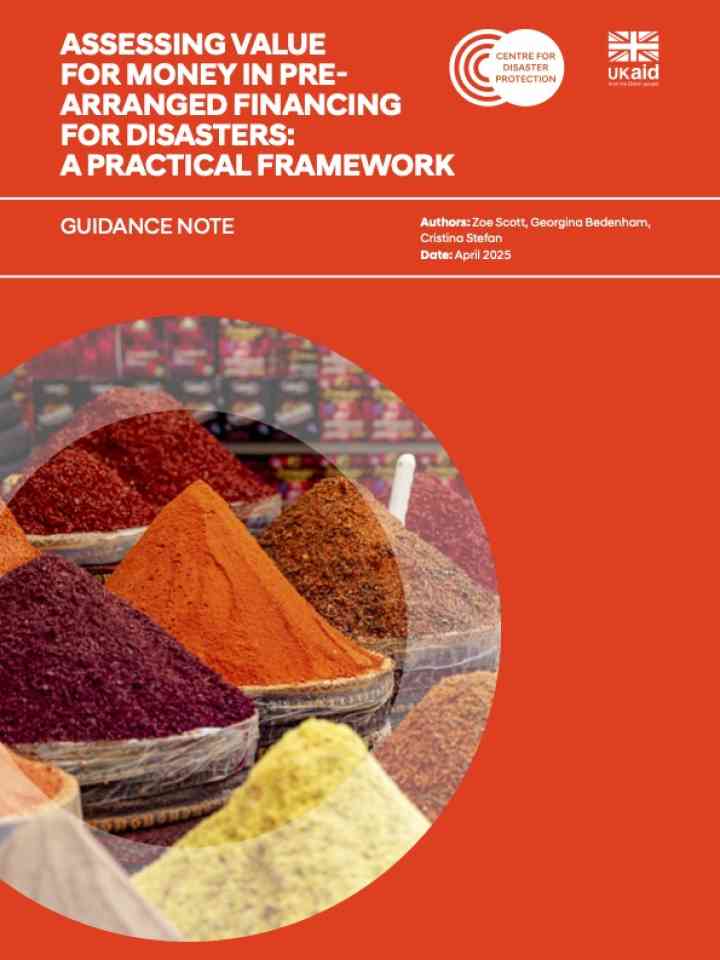Assessing value for money in pre-arranged financing for disasters: a practical framework
This guidance note from the Centre for Disaster Protection presents a practical framework to help governments, donors, and humanitarian agencies assess value for money (VfM) when selecting pre-arranged disaster risk financing (PAF) instruments. Designed as a step-by-step guide, it walks users through the process of analyzing and comparing financial tools—like insurance, catastrophe bonds, and contingency funds—based on their costs, benefits, and ability to meet specific risk and response needs. The guidance helps shift disaster response planning from reactive to proactive by ensuring financial strategies are chosen before disasters strike, maximizing speed and effectiveness.
The note emphasizes that achieving VfM is not about choosing the cheapest option, but the most effective one for the context. It introduces a seven-step analytical framework combining quantitative methods (like cost-benefit and opportunity cost analysis) with qualitative assessments (such as institutional readiness and social impact). Case studies from countries like Jamaica and Uganda show how different financial tools can be layered to match the frequency and severity of risks. The note also stresses the importance of defining a clear “value statement” early in the process and involving diverse stakeholders to ensure the chosen financial solutions align with broader disaster risk management goals.
Explore further
